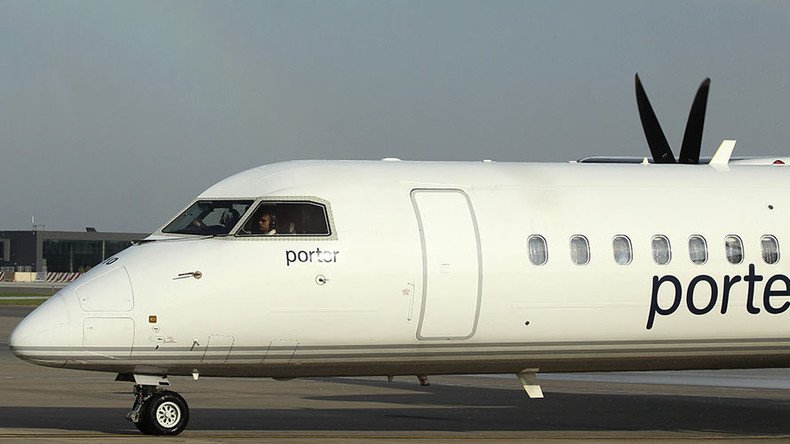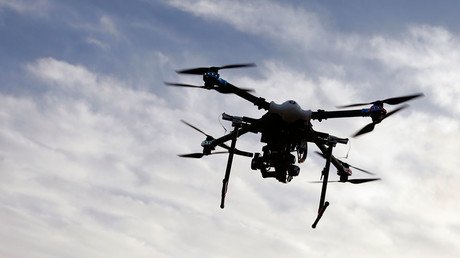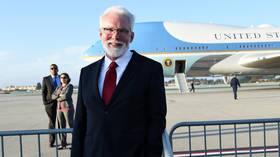2 injured as Toronto-bound passenger jet narrowly avoids collision with ‘drone’

A Porter Airlines plane in Canada with 54 passengers on board took a risky maneuver, plunging at the altitude of just 3,000 meters in a bid to avoid a midair collision with what seemed to be a civilian drone east of Toronto on Monday.
Two flight attendants who carried on with their duties during the maneuver to make sure the cabin is ready for landing were hurt and taken to the hospital, but have since been released, Metro News reported. There have been no reports on any injuries sustained by any of the passengers.
According to the official statement released by the airline, pilots noticed an object which they initially took for a balloon as they were flying over Lake Ontario at about 7:20 a.m. local time Monday, some 50 kilometers east of Toronto. However, “after debriefing” the pilots reconsidered their initial assessment and began to treat the object as an unmanned aerial vehicle. That made them to take an “appropriate evasive action,” according to the airline.
Thanks to the prompt response from the pilots, the plane landed safely at Billy Bishop Toronto City Airport at about 7:31 a.m. local time.
The Transportation Safety Board of Canada launched an investigation into the incident, saying that it has yet to ascertain what type of the object disrupted the flight and how deep the plane dived to avoid being hit.
"It happened so quick, they have no idea what it was. It's just something that they knew they were going to hit unless they took evasive action," Peter Rowntree, a senior investigator with the board told The Canadian Press, adding that the contact was “very close” at the time of the incident.
TSB investigates Porter Airlines DHC-8 evasive manoeuvre to avoid balloon or drone near Toronto, Canada: https://t.co/CTHTKvNeBGpic.twitter.com/4OOSZme5gn
— Aviation Safety Net (@AviationSafety) 14 ноября 2016 г.
The investigators will now have to study voice recorders and flight-data recorders they retrieved to determine the circumstances of the daring maneuver, although there is a chance that it will still not possible to find out exactly with what type of object the pilots had to deal with.
"We may never be able to determine what exactly they saw," he said.
For its part, the Canadian government dubbed the incident as “serious” with the parliamentary secretary to Canadian Transport Minister Kate Young pointing out that “drones can be dangerous if they get too close to aircraft,” as cited by CBC Canada.
The minister also said that the government is preparing new legislation concerning drone flying as their use by ordinary Canadians is getting more widespread. The government mulls restricting the use of such devises by putting additional responsibility on the owners, such as making them to pass a knowledge test, obtain an insurance and register unmanned vehicles, CBC reported.
At present, no special permit is needed to possess a drone weighting less than 35 kilograms, although the owners must not fly them close to airports.














